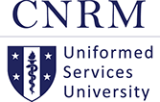BIOMEDICAL RESEARCH IMAGING CORE (BRIC) lab
EqUIPMENT
7T MRI Scanner:
BioSpec 70/20 system. 7-Tesla (T), 20-cm horizontal bore, superconducting magnet. It has a comprehensive mouse and rat positioning and physiological monitoring system and ability to also scan ferrets.
PET/SPECT/CT:
Mediso NanoScan small-animal PET/SPECT/CT imaging system. This scanner has expanded our imaging capabilities to include rodents, rabbits and small, non-human primates. We can scan multiple mice at the same time for certain studies. Individual holding chambers for rodents between isotope injection and scanning are provided in the imaging suite. We have an approved Radionuclide Experimentation Authorization (REA) from the University for ordering a variety of radiotracers and we collaborate with the NIH’s tracer development lab for novel radioactive probes.
MicroCT:
In Vivo - SkyScan 1278 in vivo micro-CT system. It utilizes x-ray in the form of a full-body animal scanning system. The user interface of the SkyScan1278 system is simple and intuitive. The system has several sizes of mouse and rat cassettes for holding animals during imaging.
Ex Vivo - SkyScan 1172 system. A high-resolution scanner for ex vivo (specimen) imaging.
Optical CT:
Perkin Elmer IVIS Spectrum CT system. Allows high throughput 2D optical imaging (up to 5 mice simultaneously) in optical mode and up to 2 animals at a time with 3D CT.
Ultrasound:
Philips iU22 Ultrasound machine. This is a full-featured diagnostic ultrasound with xMatric Transducers. It is able to provide capabilities for all animal sizes (small animal to large animal).
Laser Speckle Contrast Imaging:
Moor FLPI-2 System. For blood flow imaging for any exposed tissue (skin or surgically exposed tissues) and species. Designed for pre-clinical cerebral blood flow in rodents. Works for other applications as well.
Post-processing:
The BRIC works with modality vendor software for standard post processing. Our advanced computation center has a number of advanced workstations with additional software licenses such as MATLAB, VivoQuant and Siemens Inveon Research Workplace. The BRIC has access to 3D ROI Atlas Based Analysis tools as well as Statistical Parametric Mapping Voxel Based Analysis for many of the imaging techniques.
IMAGING REQUESTS
For possible inclusion of imaging for your project or grant application, please email BRIC@usuhs.edu. In addition, all regulatory paperwork will be required to submit in advance of the start of any imaging.
A copy of the approved IACUC protocol must be submitted to the BRIC prior to the initial study for all animal imaging. Any deviations/modifications from the submitted proposed procedures and or animal numbers will be communicated to and approved by the BRIC Director. The IACUC protocol PI’s are required to adhere to all IACUC requirements, including any imaging.
Scope:
Investigators must have a defined plan for the overall scope to include total hours for planning, imaging and post processing of the work to be completed prior to initiation of the work. Changes to the methods and scope of work may require a new application to be made.
Deliverables:
Abstracts, presentations, publications and/ or grant submissions are expected for all projects undertaken by the BRIC or with use of BRIC equipment and are consistent expectations with the University.
Depending on the level of BRIC personnel involvement and intellectual property included in the execution of a research protocol, the BRIC investigators may be considered collaborators to your project and deserve to be authors on abstracts, presentations and publications if their involvement meets the international standards of authorship. If BRIC personnel are providing scanning, post processing or designing your imaging, that is considered proving a substantial contribution and intellectual content. BRIC personnel would also then assist with drafting abstracts, presentations and publications as collaborators with you. Specific roles of BRIC investigators are expected to be defined prior to initiation of scientific efforts, to include authorship.
In all other cases, an acknowledgement of the use of the BRIC facilities and personnel is required.
According to the guidelines of the International Committee of Medical Journal Editors (ICMJE), authorship credit should be based on the following 4 criteria:
- substantial contributions to conception or design of the work, or the acquisition, analysis, or interpretation of data for the work; and
- drafting of the work or revising it critically for important intellectual content; and
- final approval of the version to be published; and
- agreement to be accountable for all aspects of the work in ensuring that questions related to the accuracy or integrity of any part of the work are appropriately investigated and resolved.
A Few of Our Partners



